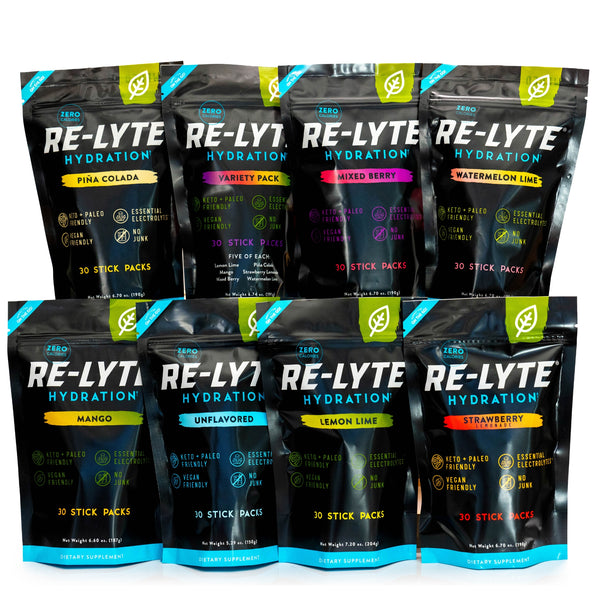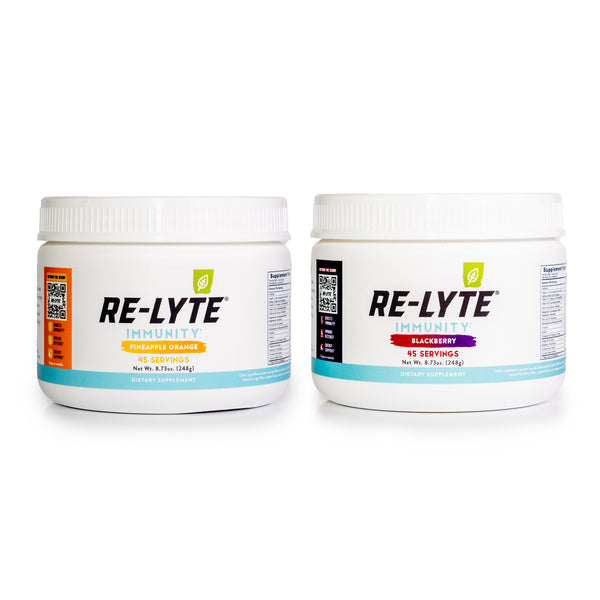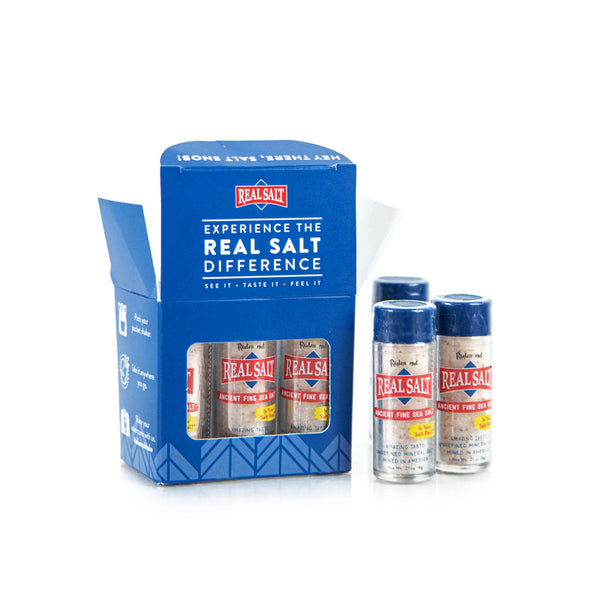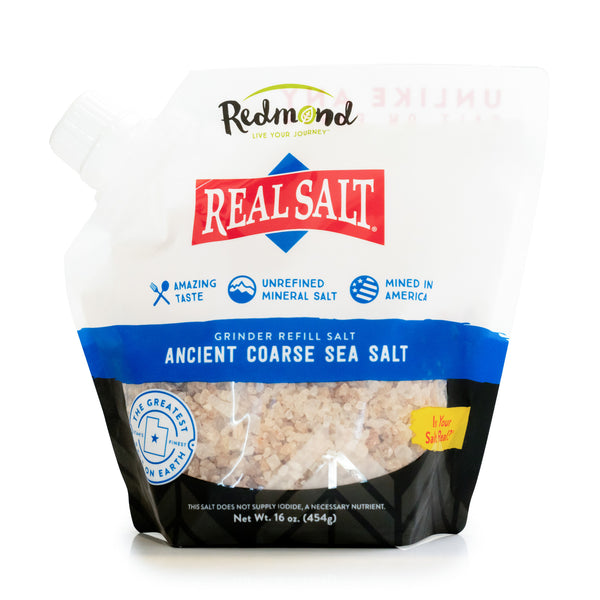The Difference Between Redmond Real Salt, Celtic, and Himalayan Salt

Article at a Glance:
- Real Salt, Celtic, and Himalayan are all unrefined sea salt with very similar mineral content.
- Celtic salt comes from evaporated ocean water along the coast of France.
- Himalayan salt comes from any of dozens of salt mines in Pakistan.
- Real Salt is harvested from an ancient underground salt deposit in Utah.
We’re going to do something today most companies don’t like to do: we’re going to say nice things about the competition.
No, that doesn’t mean we’re going to be kind to that bitter, chemically treated white table salt you still find in far too many kitchens, because if you understand the health benefits of Real Salt you already know that Real Salt and table salt aren’t really the same product. But we are going to answer a question we hear a lot when people are considering their salt options: What’s the difference between Redmond Real Salt, and Celtic or Himalayan salt?
(Are you wondering why we’re only talking about Celtic and Himalayan? It’s because we are, first and foremost, salt lovers, and if for some reason Real Salt didn’t exist, Celtic and Himalayan are really the only other salts we’d consider using.)
Here’s a handy chart that will show you some of the differences at a glance.

Real Salt
Real Salt is an all-natural, unrefined sea salt harvested from an ancient ocean. It’s full of natural minerals that make it healthy, delicious, and pink or red looking, and though we do hate to boast, we’re also the best-selling brand in America’s health food stores. Our salt deposit is in Redmond, Utah where our team enjoys award-winning work conditions and generous pay – and since we own and control the whole process you can be sure Real Salt comes to you through our world-class production facilities in its unrefined, mineral-rich, delicious state, exactly as nature intended.
Celtic Sea Salt
Celtic Salt is a great salt harvested from the current ocean in France. They do a terrific job with their salt, harvesting it by hand and leaving it unprocessed so it contains those important trace minerals. Compared to Real Salt, the biggest difference is that the current ocean is exposed to many anthropogenic environmental issues that ancient seas never experienced – things like mercury, lead, plastic, petroleum toxins and other man-made chemicals. It's a very wet salt, which makes for some amazing texture and flavor combinations. We like the idea of salt that comes from an ancient sea, before man-made pollution was prevalent, but Celtic is a great option.
Himalayan Pink
Like Real Salt, the Himalayan brands are harvested from an ancient salt deposit that would have been created long before there were any modern toxins. Geologically, the Himalayan deposit is very similar to Real Salt; they both have the full spectrum of minerals and both can be considered crystal salts. Tasted side by side, Real Salt is a bit sweeter, while Himalayan tends toward an earthy flavor.
The big difference between Real Salt and Himalayan is geography. Real Salt comes from the USA (Redmond, Utah), and the Himalayan deposits are in and around Khewra, Pakistan. There are a number of different mines supplying the Himalayan brands, and some have more modern standards than others. Himalayan salt has to travel more than 7,000 miles just to make it to America, with all the environmental impacts that come with that. Real Salt not only has to travel a shorter distance, but our operations in Redmond are powered by our two large solar fields, reducing our environmental impact even more.
Generally, Real Salt is half the cost (we’re so glad we don’t have to ship it from Pakistan!) and we know you can always trust the quality, processes, and labor policies that bring Real Salt to your kitchen.
Salt Source Map
Use this map to get an idea where three of the top unrefined sea salts come from.

Still not sure which salt is right for you? If you’re closer to Pakistan than you are to Utah, we think a Himalayan salt could be your best choice. And you can always take the Real Salt taste test: First try Real Salt, then try whatever salt you used to use. The difference will amaze you!
Comments (158)

what are the mineral etc differences on the salts instead of just where the salts come from?
———
Redmond Life replied:
Great question, ! While the blog focuses on origin, there are mineral differences between the salts, too. You can see Real Salt’s full mineral breakdown in our Typical Analysis Report here: https://redmond.life/pages/mineral-analysis We don’t have verified third-party analyses for the others, but Real Salt naturally contains trace minerals like magnesium, potassium, and calcium.

I love the Redmond salt that I use in my home kitchen. A question I have is do you ever make salt caplets? I need to take salt as a supplement and caplet form is the most convenient way.
———
Redmond Life replied:
Thanks for your question! Yes, we do offer salt in capsule form. They’re called Re-Lyte Hydration Support Capsules and are a convenient way to supplement with Redmond Real Salt plus key electrolytes. You can find them on our website here: https://redmond.life/products/re-lyte-hydration-support-caps

One thing that you guys forgot to mention in your article comparing Redmond Real Salt to Celtic Salt and Himalayan Salt is that Redmond Real Salt is the most bioavailable & absorbable salt out of all three!
———
Redmond Life replied:
Thanks for your comment, Scott! We appreciate you sharing your perspective. We love unrefined Real Salt too!

Most interesting! My wife bakes with it.
———
Redmond Life replied:
Hi Glenn, thanks for your comment! We’re glad you and your wife enjoy baking with Real Salt.













